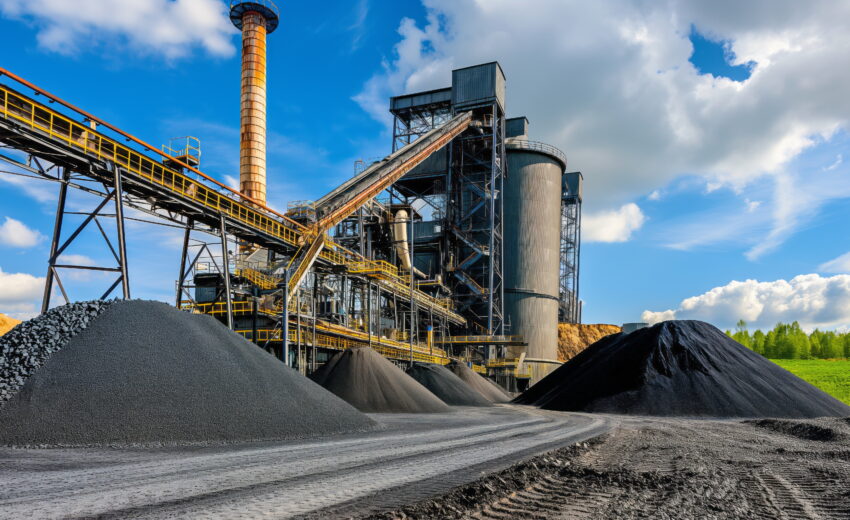The cement industry is the backbone of global infrastructure, yet manufacturers face relentless pressure to optimize efficiency, reduce costs, and meet sustainability goals. In this high-stakes environment, SAP Business One emerges as a game-changer, offering a robust ERP solution tailored for cement production. This blog explores how SAP Business One integrates advanced technology to streamline operations, empower data-driven decisions, and future-proof manufacturing processes.
Challenges in Cement Manufacturing: Why Innovation is Non-Negotiable
Cement production involves complex, resource-intensive processes, from raw material extraction to clinker formation and packaging. Key pain points include:
- Inefficient Production Planning: Manual scheduling leads to downtime or overproduction.
- Energy and Resource Waste: High energy consumption and CO₂ emissions.
- Supply Chain Fragmentation: Disconnected inventory and procurement workflows.
- Quality Control Gaps: Inconsistent product quality due to manual inspections.
- Reactive Maintenance: Unplanned equipment failures disrupting output.
Without digital transformation, these challenges erode profitability and competitiveness.
SAP Business One: The ERP Powerhouse for Cement Manufacturers
SAP Business One is a scalable, integrated ERP platform designed for mid-sized enterprises. Its modular architecture centralizes critical functions like production, inventory, finance, and analytics into a single system. For cement plants, this means:
- End-to-End Process Integration: Unify siloed departments with real-time data sharing.
- Customizable Workflows: Adapt modules to kiln operations, raw material mixing, or logistics.
- Cloud and On-Premise Flexibility: Secure data accessibility across global facilities.
Streamlining Production Planning & Scheduling
Dynamic Demand Forecasting
SAP Business One’s Material Requirements Planning (MRP) module uses historical data and market trends to predict demand, automating raw material procurement and reducing stockouts.
AI-Driven Production Scheduling
Machine learning algorithms optimize production sequences, balancing kiln utilization, labor shifts, and energy consumption, leading to 15-20% faster turnaround times.
Real-Time Monitoring & Control
Integrating IoT sensors across crushers, kilns, and grinders feeds live data into SAP Business One’s dashboard, delivering:
- Instant Anomaly Detection: Alerts for temperature deviations or equipment slowdowns.
- OEE Tracking: Monitor Overall Equipment Effectiveness (OEE) to pinpoint bottlenecks.
- Remote Management: Adjust parameters from centralized control rooms.
Inventory & Supply Chain Optimization
Smart Inventory Management
- Automated Replenishment: Trigger orders when raw materials (limestone, gypsum) hit minimum thresholds.
- Warehouse Digitization: Barcode/RFID tracking reduces errors by 30%.
Supplier Collaboration Portal
Integrate suppliers into SAP Business One for seamless PO generation, delivery tracking, and invoice reconciliation.
Quality Control & Compliance
- In-Line Analytics: SAP Business One’s Quality Management Module auto-analyzes clinker composition, ensuring adherence to ASTM/CEN standards.
- Audit Trails: Automatically log production data for regulatory compliance (e.g., ISO 50001).
Predictive Maintenance & Asset Management
From Reactive to Predictive Strategies
- Condition Monitoring: Vibration and thermal sensors predict equipment failures.
- Maintenance Scheduling: Plan downtime during low-demand periods, boosting asset lifespan by 25%.
Energy Management & Sustainability
Carbon Footprint Tracking
SAP Business One’s Sustainability Analytics module calculates emissions per ton of cement produced.
Energy Consumption Optimization
AI identifies energy leaks in grinding or cooling processes, reducing costs by up to 18%.
Data-Driven Decision Making
Transform raw data into actionable insights:
- Customizable Dashboards: Track KPIs like production yield, downtime, and cost per ton.
- Advanced Reporting: Generate granular reports on shift performance or fuel efficiency.
Integration with IoT & Emerging Tech
- Digital Twins: Simulate kiln operations to test process changes risk-free.
- Blockchain for Traceability: Secure, transparent tracking of materials from quarry to customer.
Implementation Best Practices
- Phased Rollouts: Start with critical modules (production, inventory) before expanding.
- Staff Training: Leverage SAP’s e-learning portals to upskill teams.
- Post-Implementation Audits: Continuously refine workflows using SAP’s analytics.
Conclusion: Future-Proof Your Cement Plant with SAP Business One
In an industry where margins are razor-thin and sustainability mandates loom, SAP Business One isn’t just an ERP—it’s a strategic ally. By digitizing production, optimizing resources, and harnessing real-time data, cement manufacturers can slash costs, boost output, and pivot swiftly to market demands.
Ready to revolutionize your cement production? Explore SAP Business One’s tailored solutions and join the ranks of agile, eco-conscious industry leaders.







